Before you begin the development of your IFS transport, you should be aware of the memory optimization capabilities and network settings that can positively affect your IFS environment.
Turning on memory optimization
The following describes the memory optimization options that you might want to use to provide better speed for your IFS transactions.
- From the Workbench left pane, expand the node you
want to associate the IFS transport with.
- Click Administration >
Memory Optimization tab.
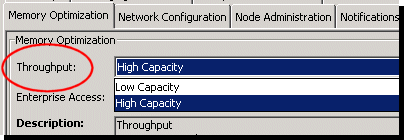
- Use the Throughput down-arrow, and
then select High Capacity. This
setting results in less available memory as compared to
Low Capacity. This is the
recommendation if you are using several transports to
access the IFS server or you expect the IFS transport
to go into Store and Forward.
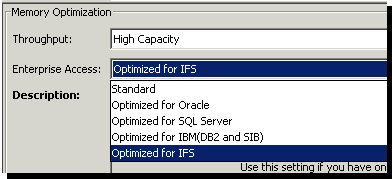
- From the Enterprise Access down
arrow, and then select Optimized for
IFS.
Optimized for IFS is strongly recommended when the ERP application must access the IFS cloud server. Without this type of optimization, WSDL querying and run time processing of the SOAP requests and responses will be slow and make the node appear unresponsive, especially when using the HTTPS protocol. | - When you have specified the appropriate settings, click Save, and then reset the node.
Setting the DNS server for host name resolution
You have the option of using a host name (instead of an
IP address) when creating the IFS transport (and IFS
transport map).
The following shows an example host name as part of the URL
address.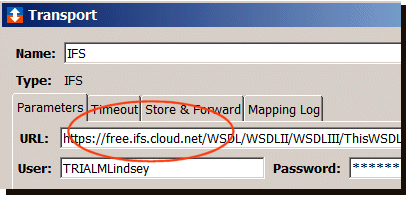
In order to use a host name, make sure the node is
configured to use a DNS server.
- From the Workbench left pane, expand the node you
want to associate the IFS transport with.
- Click Administration >
Network Configuration tab.
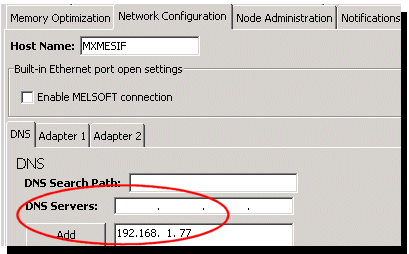
This is the IP address for the DNS server to search for host name resolution.
Validating the network settings
Once you have set the IP address for the DNS server, you can test that the Transaction Server can access the IFS server as follows:
- From the Workbench left pane, expand the node you
want to associate the IFS transport with.
- Click Administration >
Diagnostics tab.

- In the Address/Host Name box, type
the fully qualified host name of the IFS server, and
then click Ping.
A window with the results of the Ping command will appear.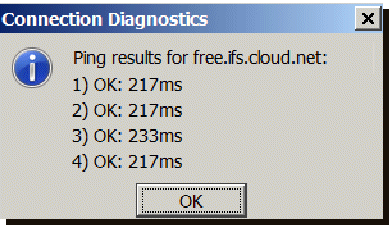
The window shows the time to establish the connection to the IFS server. - Click OK.
Now that you have tested the network connection to the IFS server, you are ready to create the IFS transport.